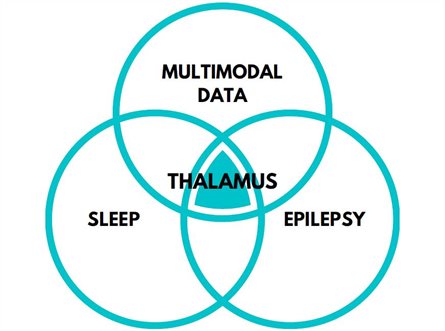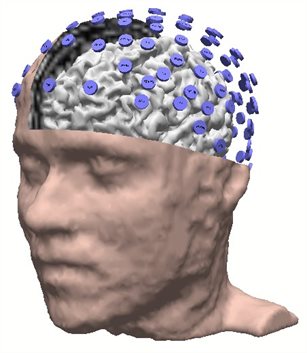Multimodal Acquisition and Analysis

Much of our work over the past fifteen years has focused on combining EEG and fMRI, developing the acquisition and analysis methods needed to measure clean signals and integrating them in a way that allows their respective strengths to be utilised. This work has benefitted from blind source separation techniques, such as independent component analysis, in order to reduce the impact of noise and to identify specific sources of information. We have developed several approaches to integrating the data, including the use of information theory as an overall framework to ask questions about how data features relate to each other and to behaviour. We have used a variety of experimental manipulations to develop and test these methods, including visual, motor and noxious stimuli and sleep deprivation.
Sleep
Sleep is an adaptive reorganisation of brain function that is no less complex than wakefulness. It is specific to the ecological niche of the organism in terms of its properties and potentially its functions. As such, if we want to understand human sleep, we need methods to study the human brain. We have used EEG-fMRI to investigate how brain networks change with sleep onset, and shown that these changes are different in people with epilepsy. However, sleeping in the MRI is difficult, so we have also investigated how waking brain function is associated with habitual sleep patterns. To do this, we use wrist actigraphy, a non-invasive technique that can be worn on the wrist for days or weeks to provide information about sleep in the participant’s home environment. We have shown relationships between sleep duration and sleep timing and brain function and structure. For example, longer sleep durations predict a higher level of functional connectivity between the prefrontal cortex and the rest of the brain. People with late sleep patterns also show differences in functional connectivity compared to those with early patterns. These differences can predict cognitive performance and mental wellbeing, suggesting that they may underlie some of the negative impacts of poor and misaligned sleep.
Epilepsy
Epilepsy is one of the most common neurological disorders. It is characterised by recurrent unprovoked seizures, and can have a debilitating impact on those who suffer from it. While control of seizures is the most urgent clinical focus, people with epilepsy can also experience disrupted sleep patterns, poorer mental wellbeing, and an overall reduction in quality of life. We are investigating how poor sleep as a result of seizures and interictal discharges impacts on people’s quality of life and other negative outcomes. This can help to understand the importance of sleep generally, and also whether sleep is an area that might be used clinically to help people with epilepsy in the future. This work is focussing specifically on children, given the general importance of sleep for brain development. We have also used EEG-fMRI as a technique to localise where in the brain epileptic activity is coming from, and to investigate how sleep onset might impact differently on the brain in the presence of epilepsy.
We believe that with more advanced methods of analysing EEG and MRI data we can extract more useful and specific information, which can help to provide more individualised approaches to the treatment of epilepsy.
The Thalamus
The thalamus is a small structure, about the size of a walnut, located in the middle of the brain. It is the first point of contact in the brain for the majority of information about the outside world, crucial for controlling and regulating brain rhythms, and implicated in the pathophysiology of many neurological and psychiatric disorders (e.g. schizophrenia, Parkinson’s disease). It is also particularly important in generalised epilepsy, involved in many types of focal epilepsy, and crucial for the control of the sleep-wake cycle and the generation of the electrophysiological activity that characterises different sleep stages. As such, it is a key target for our research. As a small structure, it can be difficult to image, and we are actively developing MRI techniques to allow it to be studied in more detail. We are also working on neuroimaging and computational methods to understand its function, and how it interacts with the rest of the brain.